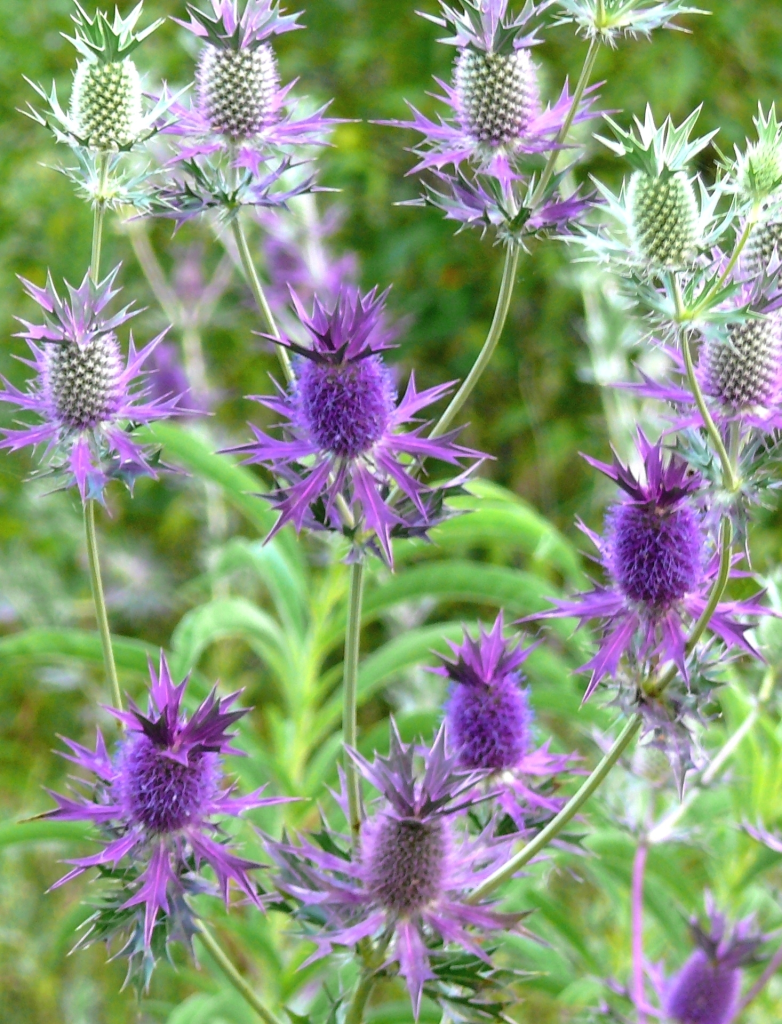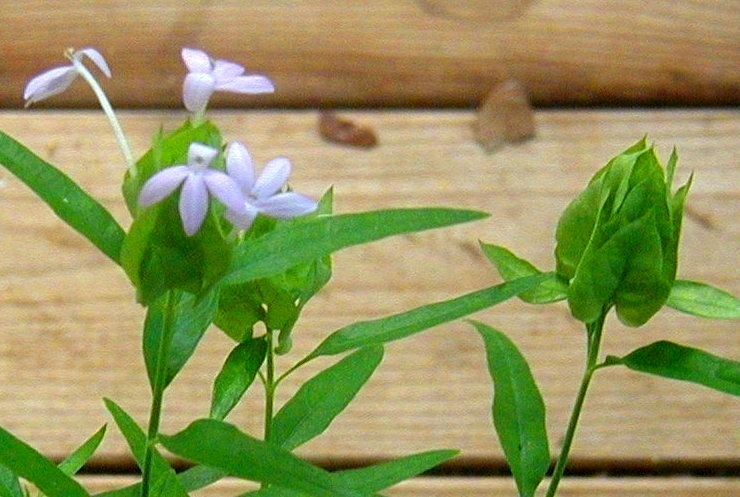Author: Bill Ward
We have many different kinds of native plants in our yard, not only to conserve water, but also because we think they make landscaping our yard more interesting and enjoyable. Luckily, we can get a variety of native plants from nurseries in Boerne or nearby in Medina, Kerrville, New Braunfels, San Marcos, and northern San Antonio.
Increasingly, natives are the plants of choice for new or refurbished urban and suburban landscapes. Several natives are becoming “standard” yard plants, almost as familiar as the once-widely-planted nandina and ligustrum, exotics that proved to be highly invasive.

Our backyard has three “non-standard” native plants that are brightening our landscape during the summer heat. These are easy-to-cultivate plants I’ve seen in very few other gardens. Even though these native plants are common in the wild in parts of the Hill Country, they are seldom available in nurseries.
One of our favorites is the indigenous eryngo (Eryngium leavenworthii). There are several species of eryngo around Texas, but the one that grows in the Hill Country is the most eye-catching. From mid-summer to fall, it has bright-purple flower heads that look like little purple pineapples. Its prickly lobed leaves give the impression of some sort of thistle, but it is a member of Apiaceae, the parsley family.

The local purple eryngo is an annual which grows two or three high, with single or multiple-branching stalks. It likes full sun. Once a population gets established in the yard, it is difficult to tell where seeds might germinate the next spring. Probably it is not the best wildflower for a well-manicured garden, but it looks great in our “wild” backyard.
I got a start of eryngo from wild roadside plants Chuck Janzow showed me on the edge of Boerne. It is difficult and painful to gather the tiny seeds from eryngo. However, I found that I can choose the places eryngo will sprout by thrashing those spots of ground with a branch of dried flower heads (after they’ve gone to seed, of course). Covering the seeds with soil is unnecessary.

Another infrequently used native plant that gives us bright blooms much of the summer and fall is the water-primrose (Ludwigia octovalvis). Without a stream or pond or boggy area, I doubt it would be easy to cultivate this plant, but it does very well along the mud banks of our backyard pond.
Water-primrose is common on stream banks and in wet ditches in this area. It grows a few feet high, with conspicuous red-brown branches and dark-green lanced-shaped leaves. From July to October, it blooms with inch-and-a-half-wide bright-yellow flowers. Our plants are in full bloom during the hottest week of 2010.

Now for something entirely different — “Texas shrimp plant” (Yeatesia platystegia). A more accepted common name is Montell bractspike, but it reminds me of a shrimp plant. This little shrub has flowers in terminal spikes with greenish-yellow heart-shaped bracts and pale-lavender corollas.
Probably the Montell bractspike is cultivated in only two yards in this part of the Hill Country, at Rebecca Rogers’ house and ours. One of the few places in Texas where this Yeatesia grows prolifically in the wild is in Montell Canyon in northern Uvalde County, where Rebecca was raised.

Thousands of plants grow on the ranch of John Rogers, Rebecca’s cousin. Mr. Rogers kindly gave us a start of “Texas shrimp plant,” and it turned out to be easy to transplant with no apparent harm to the plant whatsoever.
I had suspected from the fact that it grows all the way from gravelly dry stream beds up to the highest hilltops, this shrub could tolerate a variety of growing conditions. It does very well in our backyard with little attention and only occasional irrigation.
Other natives blooming in our backyard this week are big bluestem and black-foot daisy (both native to our property), pigeonberry, flame acanthus, greeneyes, Salvia greggii, kidneywood, and the last of the standing cypress. Everything else is taking August off.
